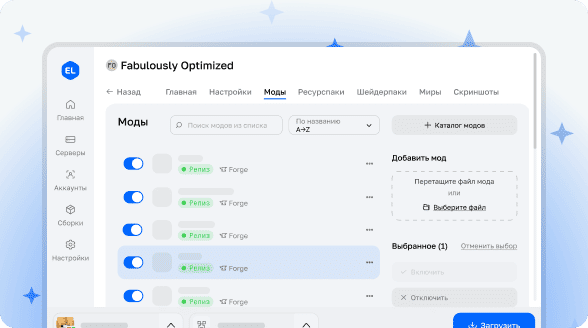
Mod Whitelist: Server Protection Against Unauthorized Modifications
Mod Whitelist provides an effective solution for securing your Minecraft server. It prevents players from connecting with unauthorized or malicious mods, ensuring gameplay stability.
System Operation Principle
The system operates on two levels - client and server:
- The client component collects identifiers of all installed mods, encrypts them, and sends them to the server
- The server component analyzes the received data and checks if the mod list complies with established rules
Installation Options and Consequences
For proper operation, the mod must be installed on both sides:
- If the mod is installed only on the client - the player will be able to connect, but server protection will not be active
- If the mod is installed only on the server - clients without it will receive a connection error with the message "multiplayer.disconnect.mod_whitelist.packet_corruption"
Configuring White and Black Lists
The configuration file is located at "
First, determine the mod identifier (modid). A simple method is to open the jar file with an archiver (WinZip, 7-Zip), find the "fabric.mod.json" file, and check the value of the "id" key. For example, the identifier of the Whitelist mod itself is "mod_whitelist".
Add the mod to the CLIENT_MOD_NECESSARY field if you want to require its installation on clients. By default, blacklist mode is used, so to ban a mod, use the CLIENT_MOD_BLACKLIST field. To switch to whitelist mode, set USE_WHITELIST_ONLY to true and add allowed mods to CLIENT_MOD_WHITELIST.
When whitelist mode is activated, the CLIENT_MOD_BLACKLIST field is ignored. In normal mode, the CLIENT_MOD_WHITELIST field is ignored.
If fabric-api is installed, the mod list can be quite extensive. To simplify collecting identifiers, launch a client with the mod installed and open the ".minecraft/logs/latest.log" file, where you will find a line in the format:
Mod Whitelist vx.x.x from the client! Modlist: ["fabric-api", "fabric-api-base", ...]

